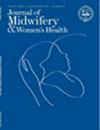Childhood Maltreatment, Labor Duration, and Intrapartum Synthetic Oxytocin Dose and Duration: A Potential Oxytocin-Linked Contributor to Labor Outcomes in Black Birthing People
Abstract
Introduction
Black pregnant people are disproportionately impacted by childhood maltreatment and maternal morbidity and mortality related to labor dysfunction. One largely unexplored link between these disparities is the maternal oxytocin system, which is affected by childhood maltreatment and integral to labor. The current study examines relationships between maternal childhood maltreatment, labor duration, and intrapartum synthetic oxytocin requirements.
Methods
This is a secondary data analysis of a completed prospective cohort study involving Black pregnant people recruited from 2 academic medical centers in Atlanta, Georgia. Participants had no health complications, term labor, and a singleton fetus in cephalic presentation (N = 109). Childhood maltreatment was assessed using the Childhood Trauma Questionnaire. Labor duration and synthetic oxytocin data were collected via health record abstraction. Associations were examined between childhood maltreatment, labor duration, and synthetic oxytocin requirements after stratification by mode of labor onset.
Results
No significant associations were found between childhood maltreatment and labor duration in the total sample (N = 109). However, among the induction of labor sample (n = 47), both small-to-moderate and larger associations were found between childhood emotional (β, 0.253; P = .073) and physical (β, 0.398; P = .003) abuse and labor duration after adjusting for parity, epidural analgesia use, and body mass index. Additionally, in the labor induction sample, there were significant, moderate-to-large associations between higher levels of childhood physical abuse with higher intrapartum synthetic oxytocin dose (ρ, 0.433; P = .002), longer duration (ρ, 0.381; P = .008), and higher average dose per hour (ρ, 0.312; P = .033).
Discussion
In a sample of Black pregnant people who underwent labor induction, childhood emotional and physical abuse were associated with longer labor duration. Childhood physical abuse was associated with higher synthetic oxytocin requirements. Further research is needed to understand the potential relationships between maternal childhood maltreatment and labor outcomes to inform future interventions toward birth outcome equity.

 求助内容:
求助内容: 应助结果提醒方式:
应助结果提醒方式:


